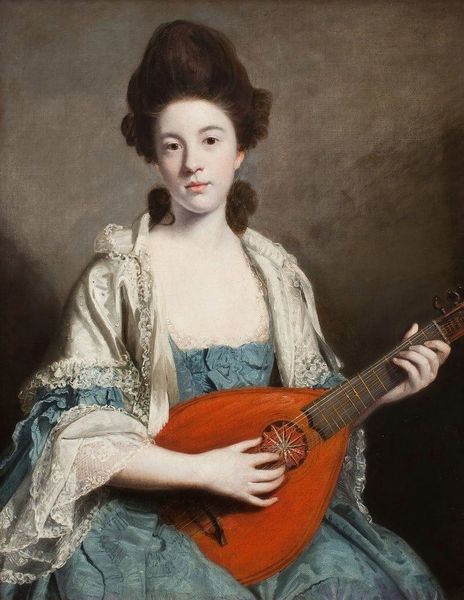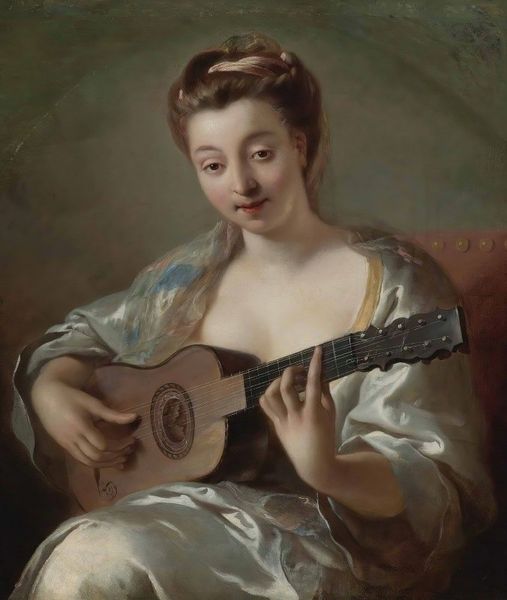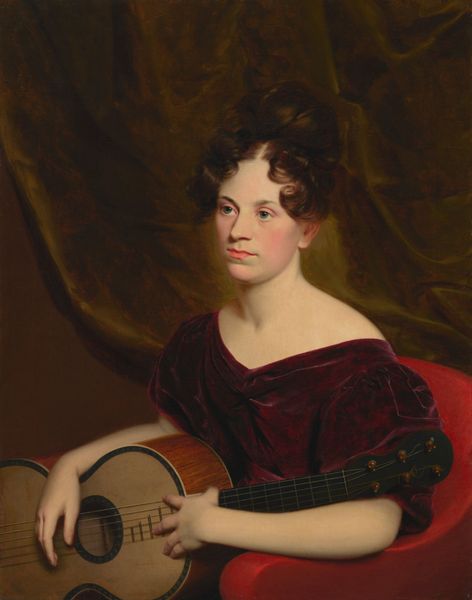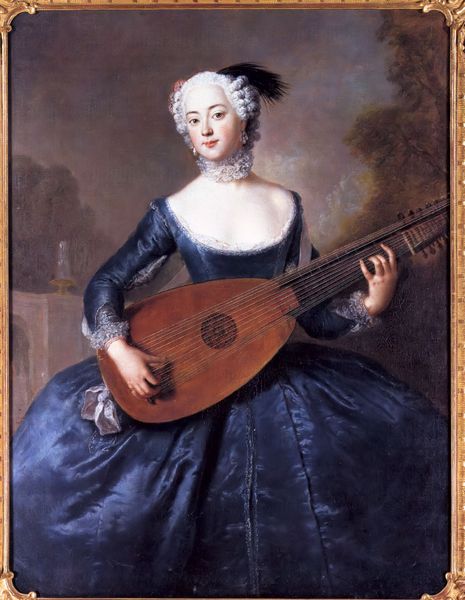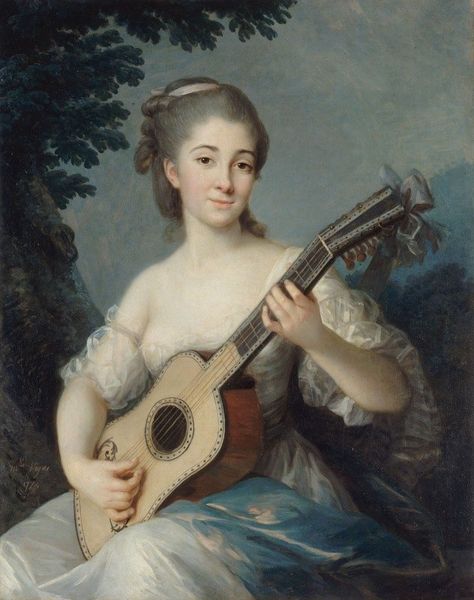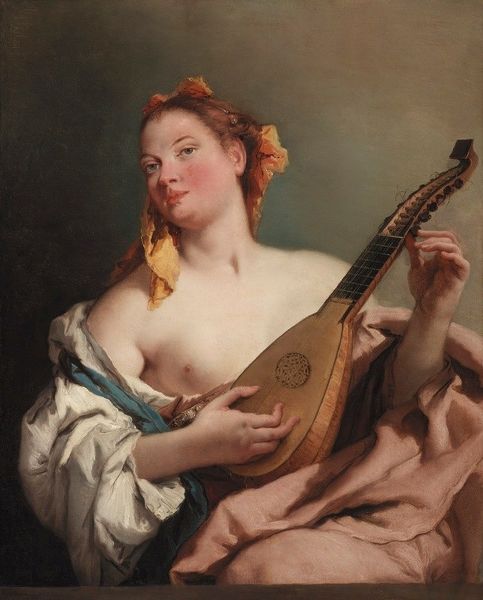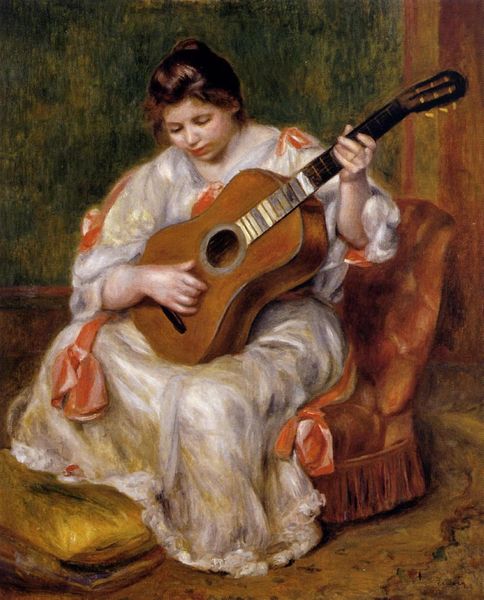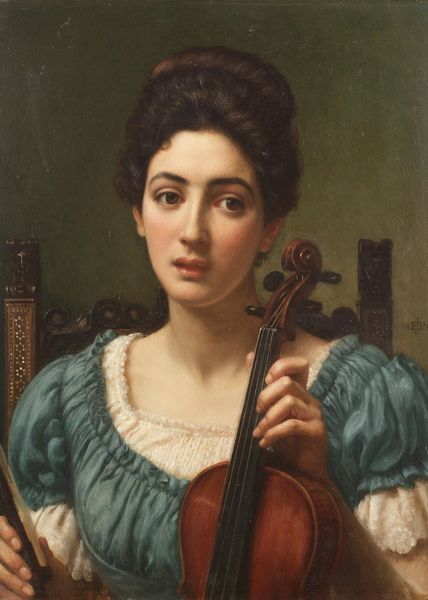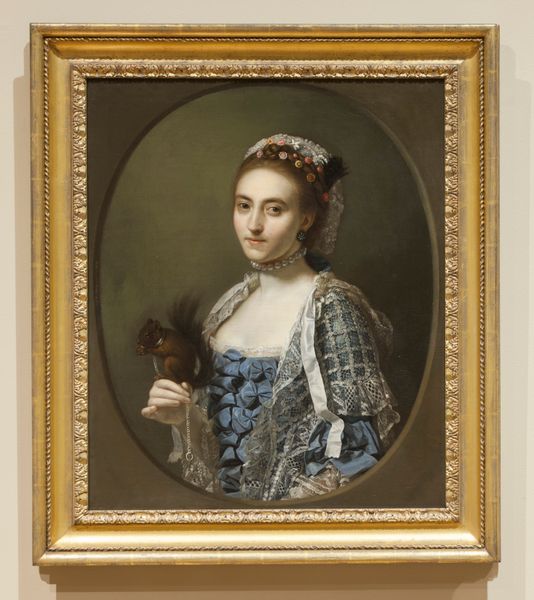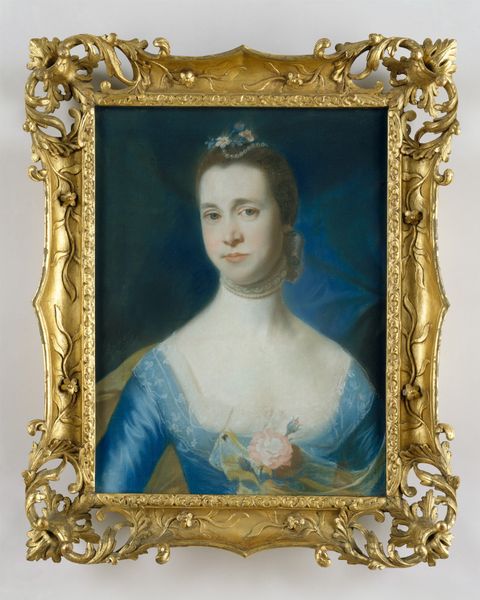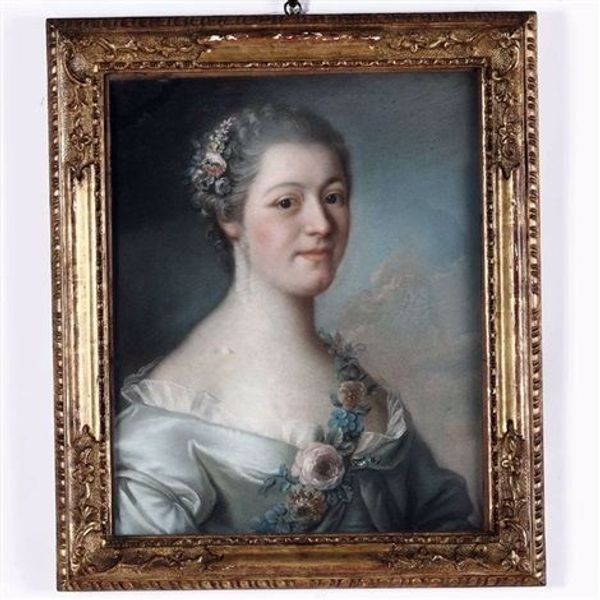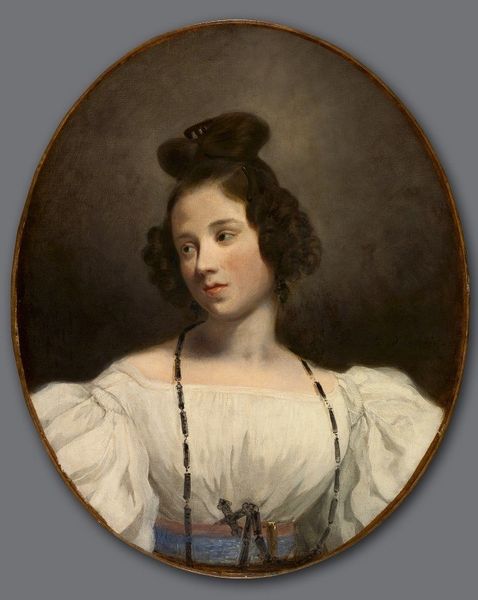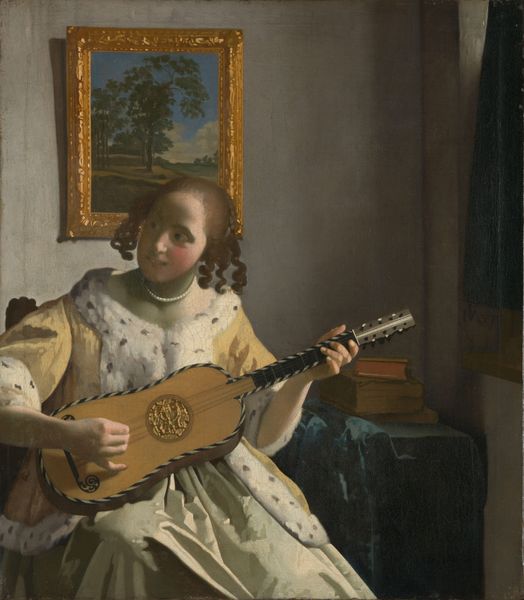
painting, oil-paint
#
portrait
#
painting
#
oil-paint
#
oil painting
#
genre-painting
#
portrait art
#
rococo
Dimensions: 35 5/8 x 28 1/2 in. (90.49 x 72.39 cm) (sight)46 x 39 in. (116.84 x 99.06 cm) (outer frame)
Copyright: Public Domain
Joshua Reynolds painted this portrait of Miss Phillis Hurrell, an English woman, using oil on canvas. As a leading portraitist in 18th-century England, Reynolds co-founded the Royal Academy and later became its first president, solidifying his influence within the art establishment. Reynolds’ portraits often flattered his subjects and catered to the tastes of the aristocratic class. Here, Miss Hurrell is depicted with an air of gentility, holding a stringed instrument called a mandolin. As you can see, the soft lighting and elegant composition serve to emphasize her social standing. Note the cultural references, such as the lace details on her clothing and the fashionable hairstyle. This suggests the sitter's familiarity with contemporary trends. Art historians can turn to sources like letters, diaries, and institutional records to learn more about the social context surrounding such works. By examining patronage networks, exhibition histories, and critical responses, we can better understand how art like this reflected and shaped the values of its time.
Comments
minneapolisinstituteofart almost 2 years ago
⋮
Phillis Hurrell was the only child of an old aristocratic family from Devon, England. She was about sixteen years old when Joshua Reynolds painted her portrait. He shows her playing a lute, perhaps a sign of her talent as well as her faithfulness and sympathetic character. Reynolds's studio records indicate that Miss Hurrell sat for the artist six times, in June of 1762, before he completed the painting in July, having it delivered to her family's home on July 29. In 1766, four years after having her portrait painted, Miss Hurrell married Robert Froude. The couple had four children. A later account of the family records Mrs. Froude's many losses after her husband's death in 1770, "Phillis the widow, a person of strong character, lived on for sixty-six years longer, and saw the grave opened, or opening, for nearly all her brilliant and fated grandchildren. Her babes, left fatherless in 1770, were Mary, Margaret, and Elizabeth; her son Robert Hurrell [Froude] was a posthumous child. The latter was to rise to more than local eminence, known throughout an exceptionally long life as Rector of Dartington, and from 1820 on, as Archdeacon of Totnes in the diocese of Exeter" (Louise Imogen Guiney, 1904).
Join the conversation
Join millions of artists and users on Artera today and experience the ultimate creative platform.
